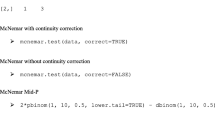Abstract.
Wound repair/regeneration is a complex process consisting of three stages: inflammation, tissue regrowth, and remodeling, which together involve the action of hundreds of genes. In order to i) identify and analyze the genes that are expressed at the inflammatory stage of repair (i.e., 24 h after injury) and ii) evaluate the molecular basis of fast-wound repair/regeneration in adult mammals, we examined the expression of 8734 sequence-verified genes in response to ear punch in a fast wound-repair/regeneration strain, MRL/MpJ-Faslpr mice, and a slow-wound-repair strain, C57BL/6J mice. Many differentially expressed genes can be assigned to wound-repairing pathways known to be active during the inflammatory phase, whereas others are involved in pathways not previously associated with wound repair. Many genes of unknown function (ESTs) exhibited a more than twofold increase in MRL/MpJ-Faslpr or C57BL/6J mice, suggesting that current understanding of the molecular events at the inflammatory stage of repair is still limited. A comparison of the differential expression profiles between MRL/MpJ-Faslpr and C57BL/6J mice suggests that fast-wound-repair in MRL/MpJ-Faslpr mice is mediated by a metabolic shift toward a low inflammatory response and an enhanced tissue repair.
Similar content being viewed by others
Author information
Authors and Affiliations
Additional information
Received: 16 June 2000 / Accepted: 31 August 2000
Rights and permissions
About this article
Cite this article
Li, X., Mohan, S., Gu, W. et al. Analysis of gene expression in the wound repair/regeneration process. 12, 52–59 (2001). https://doi.org/10.1007/s003350010230
Issue Date:
DOI: https://doi.org/10.1007/s003350010230




